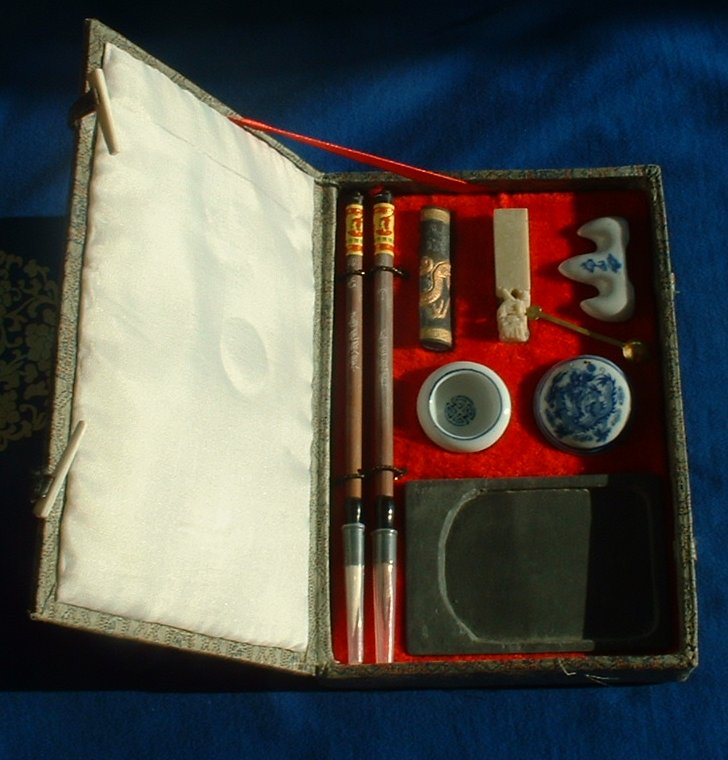Group of American universities Updated 2025-07-16
Growth medium Updated 2025-07-16
Guerilla Open Access Manifesto by Aaron Swartz (2008) Updated 2025-07-16
Hmmm, he does not know how to spell guerilla? sic? www.quora.com/What-is-the-correct-spelling-guerilla-or-guerrilla
That's how Russian shadow library maintainers do it, they know how to crime good old Russians. Maybe there is a good thing about having dictatorships in the world that give zero fucks about American copyright laws. There will always be some random Russian academic who will implement this and not go to jail. Maybe it's even state sponsored.
Guitar Updated 2025-07-16
The guitar is a highly imperfect instrument if compared to something like a piano, which is much more mathematically elegant.
However, Ciro Santilli just loves this imperfection for some reason, especially in the case of the electric guitar.
Guqin Updated 2025-07-16
Stringless guqin fan painting by Feng Chaoran (1943)
Stolen traight from www.silkqin.com/10ideo.htm on silkqin.com:Wind in the pines and a babbling brook are nature's melody. A qin was brought along, but there is no need to play it
Hall resistance Updated 2025-07-16
In some contexts, we want to observe what happens for a given fixed magnetic field strength on a specific plate (thus and are also fixed).
In those cases, it can be useful to talk about the "Hall resistance" defined as:So note that it is not a "regular resistance", it just has the same dimensions, and is more usefully understood as a proportionality constant for the voltage given an input current:
This notion can be useful because everything else being equal, if we increase the current , then also increases proportionally, making this a way to talk about the voltage in a current independent manner.
And this is particularly the case for the quantum Hall effect, where is constant for wide ranges of applied magnetic field and TODO presumably the height can be made to a single molecular layer with chemical vapor deposition of the like, and if therefore fixed.
Hamilton's equations Updated 2025-07-16
Analogous to what the Euler-Lagrange equation is to Lagrangian mechanics, Hamilton's equations give the equations of motion from a given input Hamiltonian:So once you have the Hamiltonian, you can write down this system of partial differential equations which can then be numerically solved.
Hanford site Updated 2025-07-16
The B Reactor of the facility produced the plutonium used for Trinity and Fat Man, and then for many more thousand bombs during the Cold War. More precisely, this was done at
Located in Washington, in a dry place the middle of the mountainous areas of the Western United States, where basically no one lives. The Columbia river is however nearby, that river is quite large, and provided the water needed by their activities, notably for cooling the nuclear reactors. It is worth it having look on Google Maps to get a feel for the region.
Unlike many other such laboratories, this one did not become a United States Department of Energy national laboratories. It was likely just too polluted.
Bibliography:
Hans Bethe Updated 2025-07-16
Richard Feynman was working under him there, and was promoted to team lead by him because Richard impressed Hans.
He was also the person under which Freeman Dyson was originally under when he moved from the United Kingdom to the United States.
And Hans also impressed Feynman, both were problem solvers, and liked solving mental arithmetic and numerical analysis.
This relationship is what brought Feynman to Cornell University after World War II, Hans' institution, which is where Feynman did the main part of his Nobel prize winning work on quantum electrodynamics.
Hans Petter Langtangen Updated 2025-07-16
GitHub account: github.com/hplgit
It should be mentioned that when you start Googling for PDE stuff, you will reach Han's writings a lot under his GitHub Pages: hplgit.github.io/, and he is one of the main authors of the FEniCS Project.
He also published to GitHub pages with his own crazy markdown-like multi-output markup language: github.com/hplgit/doconce.
Rest in peace, Hans.
Harvard University Updated 2025-07-16
How to decide if an ORM is good? Updated 2025-07-16
How to decide if an ORM is decent? Just try to replicate every SQL query from nodejs/sequelize/raw/many_to_many.js on PostgreSQL and SQLite.
There is only a very finite number of possible reasonable queries on a two table many to many relationship with a join table. A decent ORM has to be able to do them all.
If it can do all those queries, then the ORM can actually do a good subset of SQL and is decent. If not, it can't, and this will make you suffer. E.g. Sequelize v5 is such an ORM that makes you suffer.
The next thing to check are transactions.
Basically, all of those come up if you try to implement a blog hello world world such as gothinkster/realworld correctly, i.e. without unnecessary inefficiencies due to your ORM on top of underlying SQL, and dealing with concurrency.
How to diagnose a genius by Wilhelm Ostwald (1909) Updated 2025-07-16
From the abstract:Ciro Santilli couldn't agree more... notably students must have a flexible choice of what to learn.
Much money, his student went on to say, is spent by various Governments in attempting to discover those people whose thorough education may be expected to bring in a return of value to the State, and the question how best to discover latent genius is an eminently practical one. After cogitation, Prof. Ostwald came to the conclusion that it is those students who cannot be kept on the rails - that is, who are not contented with methodical teaching - who have within them the seeds of genius
How to exit from repl in rshell? Updated 2025-07-16
Ctrl + X. Documented by running
help repl from the main shell. How to make animations of molecular biology processes Updated 2025-07-16
How to use an Oxford Nanopore MinION to extract DNA from river water and determine which bacteria live in it PCR Updated 2025-07-16
More generic PCR information at: Section "Polymerase chain reaction".
Because it is considered the less interesting step, and because it takes quite some time, this step was done by the event organizers between the two event days, so participants did not get to take many photos.
PCR protocols are very standard it seems, all that biologists need to know to reproduce is the time and temperature of each step.
This process used a Marshal Scientific MJ Research PTC-200 Thermal Cycler:
We added PCR primers for regions that surround the 16S DNA. The primers are just bought from a vendor, and we used well known regions are called 27F and 1492R. Here is a paper that analyzes other choices: academic.oup.com/femsle/article/221/2/299/630719 (archive) "Evaluation of primers and PCR conditions for the analysis of 16S rRNA genes from a natural environment" by Yuichi Hongoh, Hiroe Yuzawa, Moriya Ohkuma, Toshiaki Kudo (2003)
One cool thing about the PCR is that we can also add a known barcode at the end of each primer as shown at Code 1. "PCR diagram".
This means that we bought a few different versions of our 27F/1492R primers, each with a different small DNA tag attached directly to them in addition to the matching sequence.
This way, we were able to:
- use a different barcode for samples collected from different locations. This means we
- did PCR separately for each one of them
- for each PCR run, used a different set of primers, each with a different tag
- the primer is still able to attach, and then the tag just gets amplified with the rest of everything!
- sequence them all in one go
- then just from the sequencing output the barcode to determine where each sequence came from!
Input: Bacterial DNA (a little bit)
... --- 27S --- 16S --- 1492R --- ...
|||
|||
vvv
Output: PCR output (a lot of)
Barcode --- 27S --- 16S --- 1492RCode 1.
PCR diagram
. Finally, after purification, we used the Qiagen QIAquick PCR Purification Kit protocol to purify the generated from unwanted PCR byproducts.
How to run a MicroPython script from a file on the Raspberry Pi Pico W from the command line? Updated 2025-07-26
The first/only way Ciro could find was with ampy: stackoverflow.com/questions/74150782/how-to-run-a-micropython-host-script-file-on-the-raspbery-pi-pico-from-the-host/74150783#74150783 That just worked and it worked perfectly!
pipx install adafruit-ampy
ampy --port /dev/ttyACM0 run blink.py How to show that a group is simple Updated 2025-07-16
scholarworks.sjsu.edu/cgi/viewcontent.cgi?referer=https://www.google.com/&httpsredir=1&article=5051&context=etd_theses proves that the Mathieu group is simple in just 200 pages. Nice.
How to teach Advertise your material Updated 2025-07-16
Once you have crated something awesome, you have to advertise it, otherwise no one will ever find it.
This means:
- Then ask them if they want to talk about anything.
- whenever someone asks as question on an online forum, answer it, and link to the section of your material that also answers that question.The material will answer many of their future questions.
Eventually, people will find you on the front page of Google searches, and then you will know that you've truly made something useful.
How to teach Become famous through teaching Updated 2025-07-16
Unlisted articles are being shown, click here to show only listed articles.




